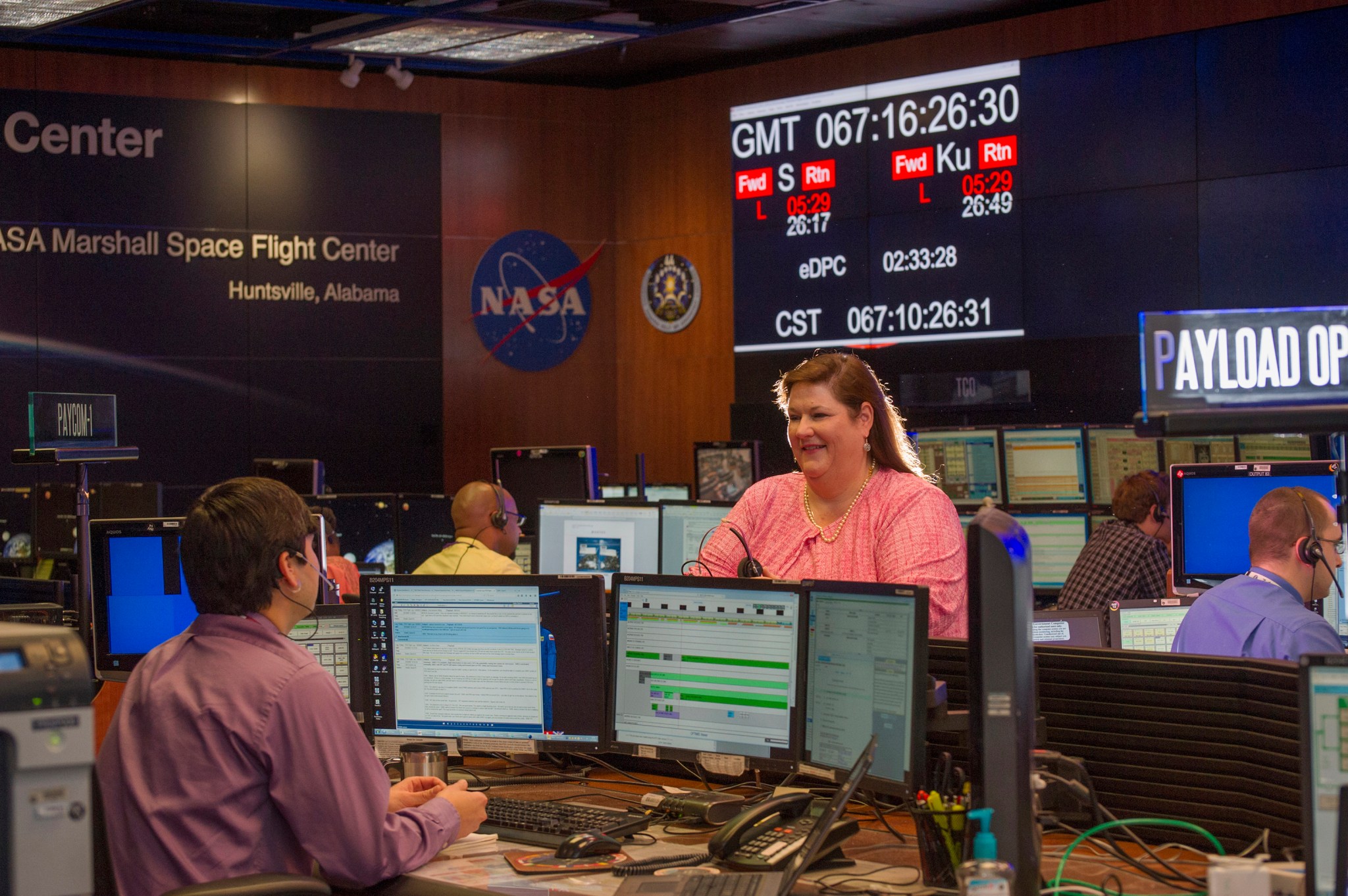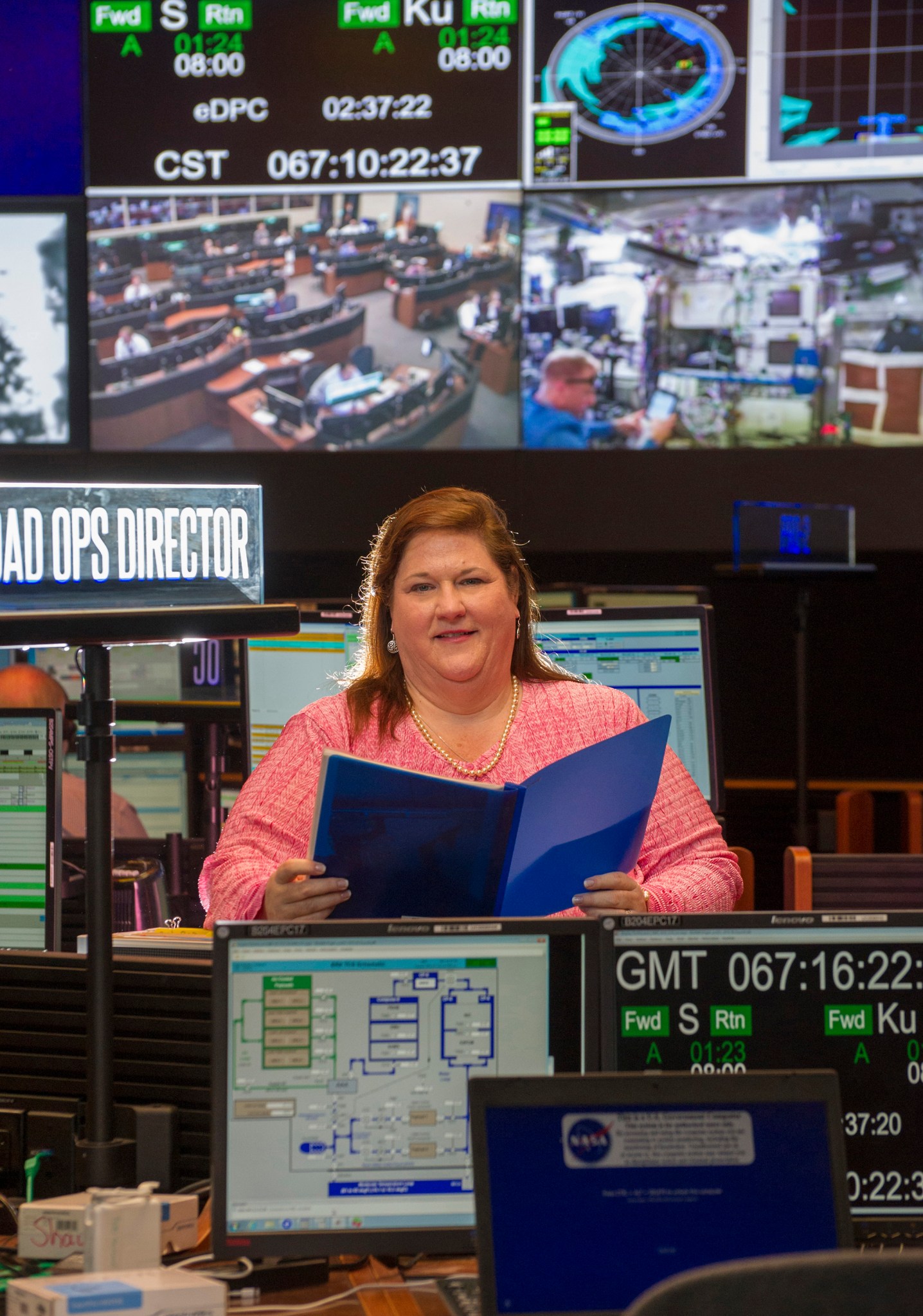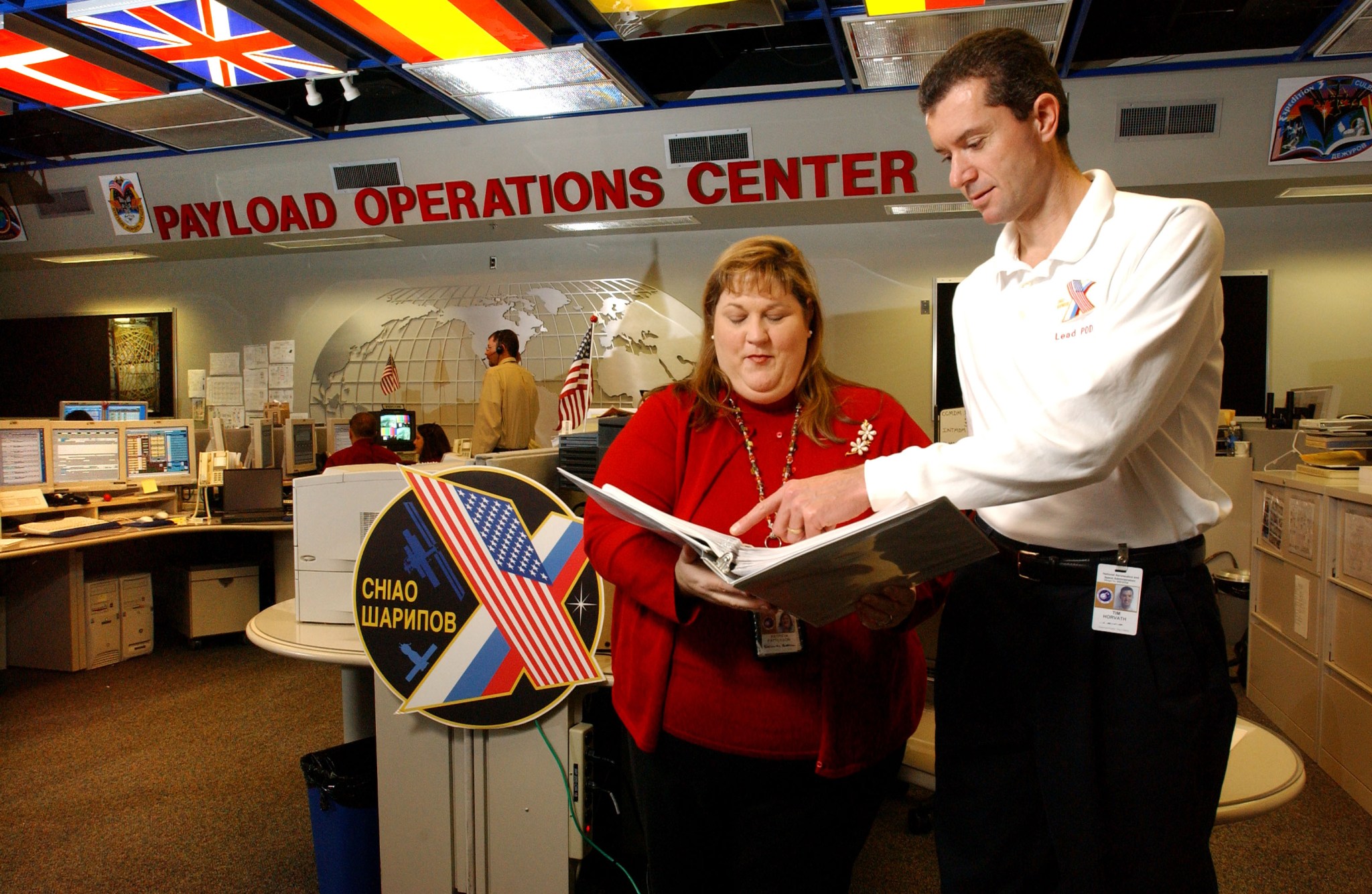Fifteen years may sound like a long time, but for Pat Patterson it seems like just yesterday that she first sat down at a console at NASA’s Marshall Space Flight Center in Huntsville, Alabama, and began talking to astronauts, helping them perform science experiments, or payloads, on the International Space Station.
Patterson was one of the first five people asked by NASA to be a payload operations director, to lead a team of flight controllers in a new facility called the Payload Operations Integration Center — created to control and monitor science on station around-the-clock.
Even though she had 20 years of experience at NASA supporting a variety of space shuttle missions, this was all new — the work, the people and even the space station, where astronauts had only been living in orbit less than a year.
This operations center was and still is “science central” for the station, and Patterson is among the handful who held the reigns.
“The room looked much like Mission Control in Houston, with computers and monitors as far as I could see,” said Patterson. “As I watched the experiment data pour through those monitors from space, I knew each day would be different, and the research we were accomplishing would be significant, not only to the crew, but to us on Earth as well.”
Over the years, the looks of the surroundings and, yes, the people, have changed – a renovated operations center, an increased number of crew members from three to six, and a handful of researchers has grown to hundreds around the world joining in the effort to improve life on Earth. But one thing hasn’t changed: Patterson’s dedication to her job and her appreciation to the people who helped shape her career.
As a senior at Huntsville High, her guidance counselor handed out applications to everyone in her calculus and computer programming class to apply for a scholarship through the NASA Cooperative Education Program, which provides opportunities for students to be considered for federal employment.

“One of the questions on the application asked what type of engineer you wanted to be. I was not very familiar with engineering at that point in my life, so I asked my teacher, and she said choose electrical engineering. I did, and I ended up earning the scholarship, and becoming a NASA co-op. I can’t thank my teachers enough for their encouragement and inspiration.”
In her 35 years at NASA, not only has she supported numerous science missions on the space shuttle, but maybe even more impressively, Patterson has worked with every crew on the station since Expedition 2 in 2001 – when the POIC began 24/7 continuous support of station science.
“Pat has been a staple in the real-time world of shuttle and station payload operations,” said Sam Digesu, project integrator and former chief of the Payload Operations Directors Office in the Mission Operations Laboratory at Marshall. “She is a tremendous resource with a wealth of knowledge and an incredible influence in guiding us to where we are today.”
Patterson’s expertise has led her to helping to pioneer the path forward for the Space Station Program. She’s part of the team for “RISE,” or Revolutionize ISS for Science and Exploration. It is a shift within the station program to change the way the global station community thinks about the orbiting lab. Right now, crews average 40 hours a week of research. When crews begin launching to station on commercial vehicles, the research time each week is expected to double.
“Spaceflight isn’t easy, but we have to make it easy for researchers and commercial companies to conduct science in space,” added Patterson. “What we do in the years we have left with this amazing vehicle and program will shape the future of human exploration. The power of the human spirit is exemplified by the space station, and I believe it should be recognized as the 8th Wonder of the World!”




























